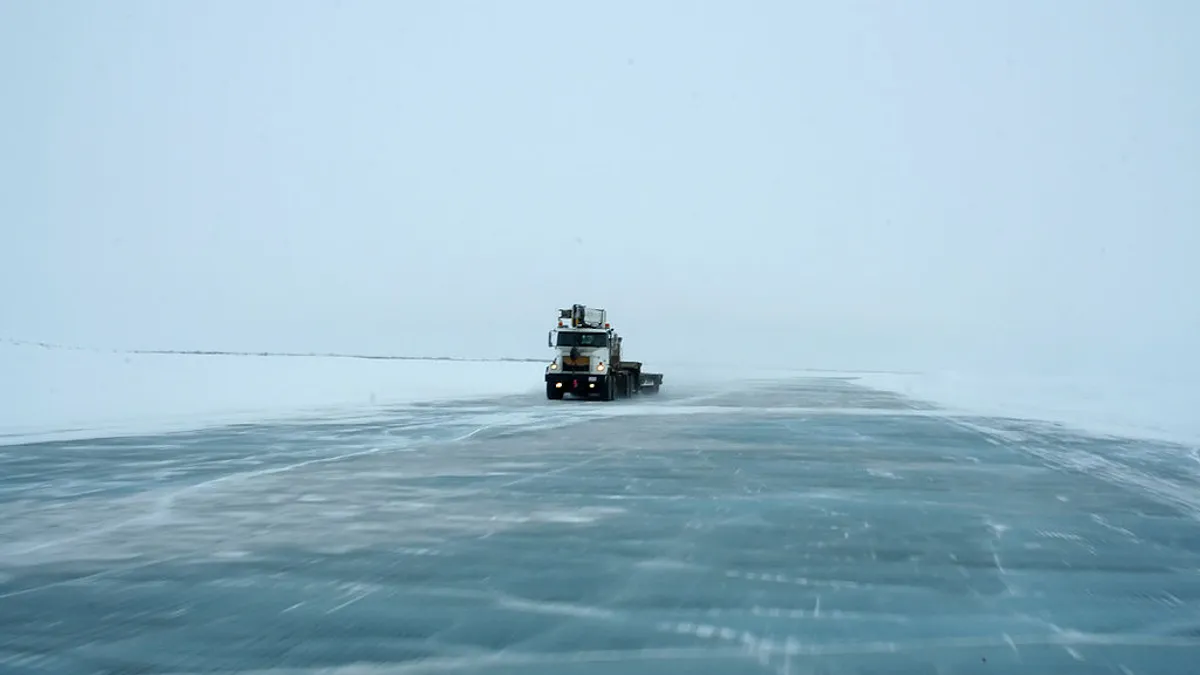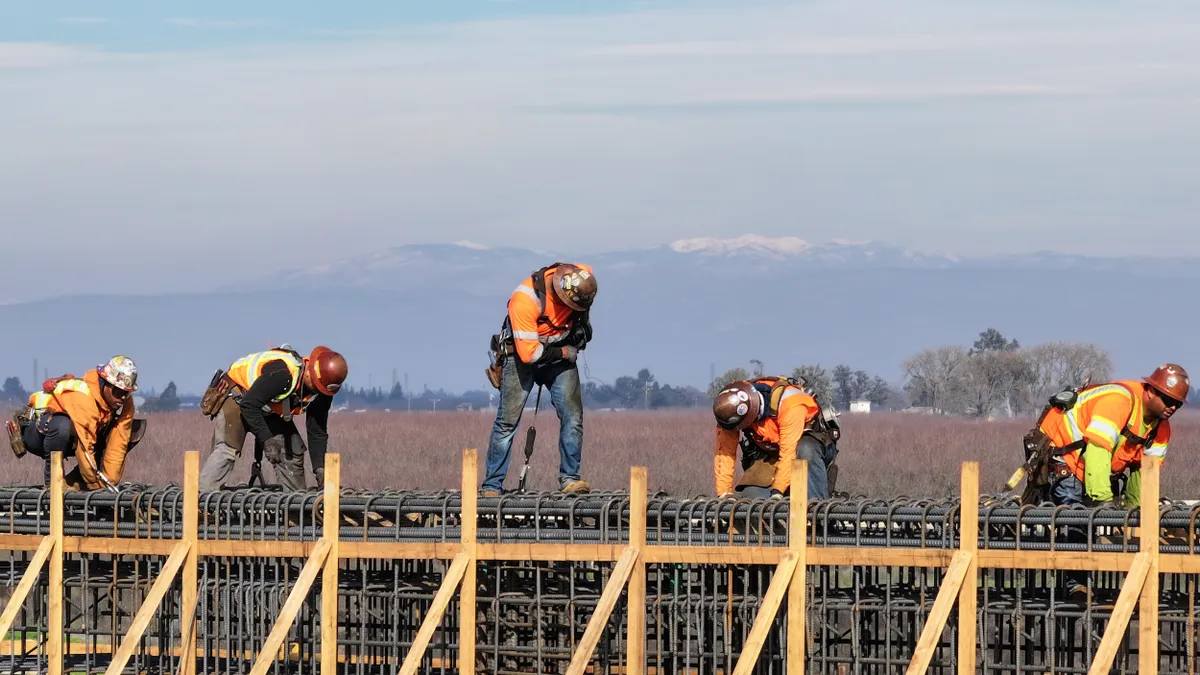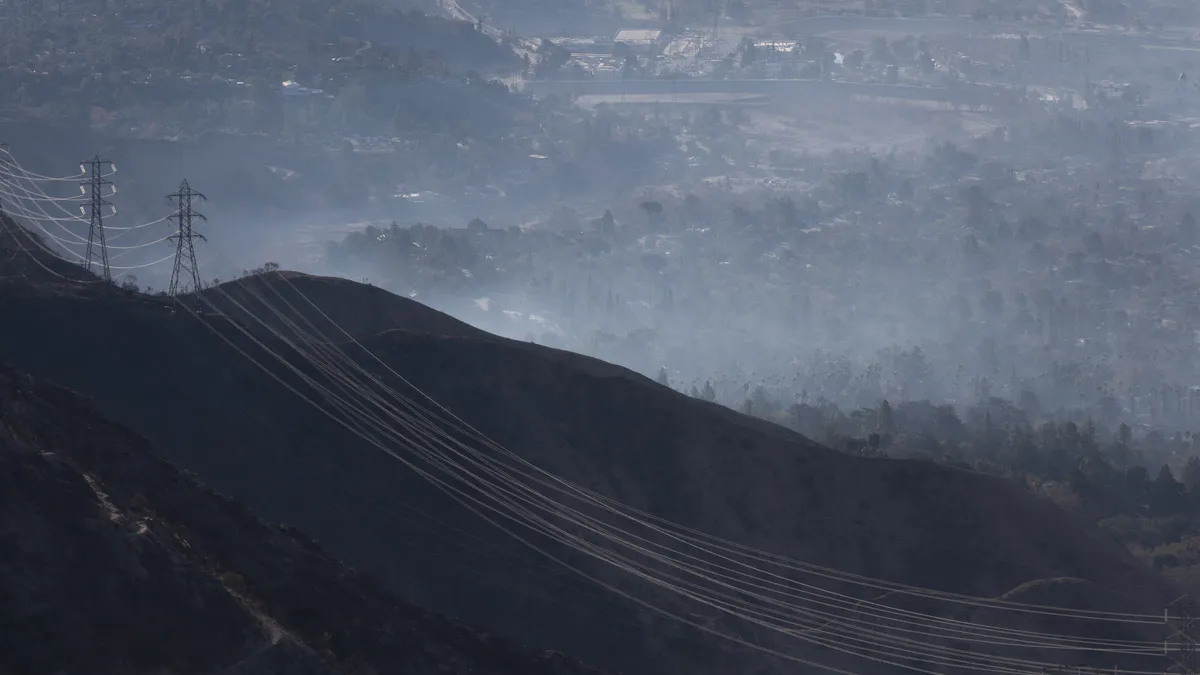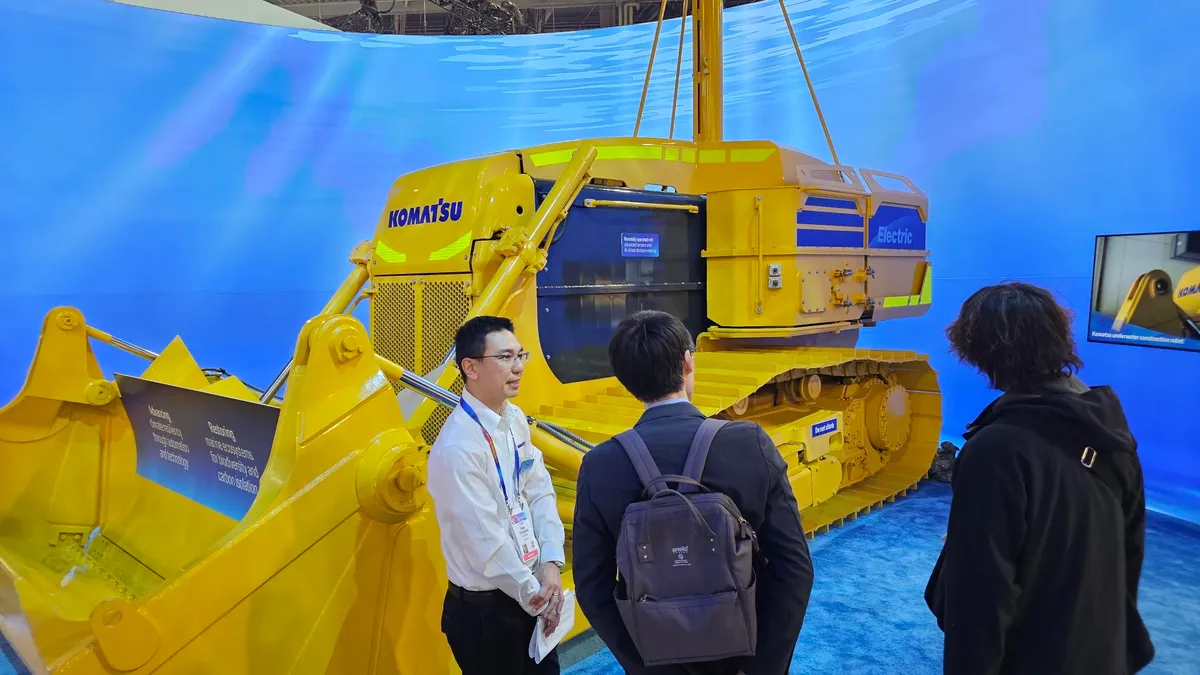Think you’ve got it cold? The Alaska Department of Transportation’s Northern Region is located almost entirely above the Arctic Circle and features the widest range of temperature extremes. It is also the most diverse region geologically, making the business of building roads and infrastructure — and keeping them open and running — a constant challenge.
To keep projects on schedule and on budget, contractors begin by using some analog tech. "Our major technology is just the calendar," said ADOT Northern Region construction manager Michael Lund. "For the most part we have a six-month season and do the work when it is light out and equipment and materials and roadways have thawed and you can meet project specs without dealing with snow and ice. There’s less specialized equipment needs, less maintenance and less safety risks for people and personnel."
When crews are forced to work projects during the winter months, safety becomes imperative. Last year, flooding on the Dalton highway — the 500-mile stretch from Livengood to Deadhorse made infamous by the Ice Road Truckers TV show — saw DOT crews performing winter construction to protect the roadway and its insulated substrate. "In those kind of conditions, you cannot get out of your vehicle," Lund said. "Within 10 minutes you’re already at risk of frostbite."
For working job sites north of the Arctic Circle (and even cold weather projects in the rest of the U.S. and Canada), polar contractors rely on ingenuity, high-performance protective gear and a range of technologies to provide worker comfort, address the challenges of building and working on ice and permafrost and avoid wind and snow hazards that can imperil contractor safety and balloon project costs.
Freeze frame
Building at the polar extremes often means incorporating construction technology not to warm things up, but to keep them cold. To keep the Dalton Highway infrastructure from warming in the sunlight and sinking into the permafrost, 2-inch thick, 4-inch by 8-inch sheets of insulation board are buried 4 inches below the substrate.
"For the most part we have a six-month season and do the work when it is light out and equipment and materials and roadways have thawed and you can meet project specs without dealing with snow and ice."

Michael Lund
ADOT Northern Region construction manager
To complete the last 50 miles of the highway, 400,000 board sheets were installed last year to keep the roadway embankments frozen solid. ADOT also uses thermosiphons to cool highway embankments, a technology that can keep the ground surrounding the thermosiphon frozen even during the summer months.
Dealing with freeze-thaw cycles can also impact cold-weather contractors in the lower 48 states. Marc Finch is the director of operations at DominionAG, which uses glycol heaters to thaw and excavate frozen ground at sites in Illinois and upstate New York. Those thaws can produce mud up to 3 feet deep, necessitating de-watering with swales and temporary trenching to keep the work area safe and clear.
"We use drones to map projects and also install webcams from TrueLook to provide job site monitoring and project time-lapse photos for identifying drainage issues in cold-weather environments as well as getting real-time weather information correlated with job site imagery," Finch said. "And then in any cold work environment you need to focus on hydration, provide frequent breaks and work in teams and never alone."
Suiting up
For workers pressed into cold-weather service, high-performance clothing including heated jackets, boots and gloves can keep core body temperatures up and the elements at bay. Bosch entered the apparel market this year with its the Bosch Max Heated Jacket. Powered by the same 12-volt max lithium-ion battery used for the company’s power tools, the jacket features three heat zones — two on the chest and one on the back that start warming in minutes and provide up to six hours of heated runtime on low heat level.
Bryce Fisher is a co-founder of Ravean, which pulled in $265,000 via Kickstarter this fall to support the company’s new Ultra-Light heated jacket. Designed as a mid-layer protective garment, the jacket has been adapted to use Quick Charge 2.0 batteries to heat several independent heat zones. Fisher said the batteries will automatically sense the power needs of the jacket wearer and adjust voltage output accordingly.
"There are days when the frigid temperatures become brutal and a sense of warmth can help the body adjust to become more productive on the job."

Jim Bohn
Bosch director of strategic development
Originally designed to supply what Fisher said is a largely underserved market for women’s heated jackets, the Ultra-Light has enjoyed high adoption among oil-field workers in Utah and beyond. "Guys are out working in negative 30 degrees Fahrenheit with a lot of other specialized equipment, so a lightweight heated down mid-layer helps them to take any jacket to the next level," Fisher said.
The Bosch and Ravean jackets both feature a battery USB port to charge smartphones and other personal electronics, and the batteries could be used in the future as a power source for a wide range of networked wearables.
"For job sites, there is definitely an interest in comfortable cold weather construction apparel," said Bosch director of strategic development Jim Bohn. "There are days when the frigid temperatures become brutal and a sense of warmth can help the body adjust to become more productive on the job."
With cold weather contractors in mind, Vibram this year launched Arctic Grip boot soles that provide enhanced grip on wet and slick surfaces, including ice. The soles feature microgrooves imbedded with glass fibers for enhanced grip and are currently available in boots including the Wolverine Crossbuck FX Ice+ and CAT Footwear Stiction HI WP Ice+. Wolverine also offers an Arctic Grip soled boot that features thermos-chromatic lugs that change color when the temperature drops below freezing to alert wearers of environmental conditions or temperature drop hazards.
Sole technology could use some improvement when it comes to cold-weather work boots. A study of 98 different boots conducted by the Toronto Rehabilitation Institute’s winter lab found that only 8% could pass a slip test on a 6-inch-by-6-inch sheet of ice angled at just a 7 degree incline (Vibram’s Arctic Grip was one of the few soles that passed).
Clear the roads
Back in Alaska, the DOT's construction teams ramp up maintenance and operations units across the winter months to respond to blizzard conditions and keep the roads and bridges clear. In Valdez, Thompson Pass features 750 inches of snow every year, and the department has adopted augmented reality heads-up display that allow plow drivers to reach speeds of 45 mph in zero visibility conditions. "It’s a great technology that keeps them right in their lines and has been very effective," Lund said.
Developed by the Intelligent Transportation Systems (ITS) Institute at the University of Minnesota in conjunction with the U.S. Department of Transportation's Intelligent Vehicle initiative, the smart plows use a combination of radar and light image and detection (LIDAR) technologies with a GPS integrated heads-up-display similar to those used in fighter jets to provide AR data and road visuals to drivers.
And if construction needs do come up, the DOT will typically RFP jobs along the Dalton Highway to external contractors, and when it can, time the bids to postpone work as deep into summer as possible. "We’re going to make sure the infrastructure is accessible and functioning," Lund said, adding that building anything in Alaska requires a wide degree of flexibility as weather conditions, remote locations and logistics constantly stress project timelines.
"Because cost is such a huge driver to public infrastructure, especially in Alaska, we’ll often specify what we want the completed product to look," Lund said. "And the end, how you get there is up to you."





















